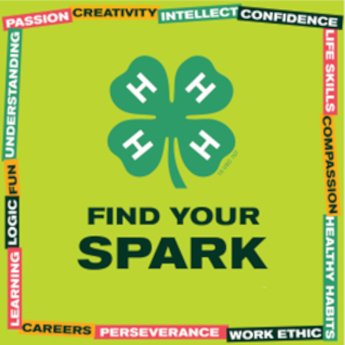6- to 8-year-olds: Ages and stages of youth development
Understanding the different stages of youth development supports youth programming efforts as it encourages relationship building between youth and adult volunteers.
In building relationships with youth, it is important to understand the development of the child. Not all children grow at the same pace, but they share many common characteristics of growth and development throughout their life. This article introduces the topic and examines implications of working with youth ages 6 to 8 years old.
“Ages and Stages of Child and Youth Development: A guide for 4-H Leaders” provides the foundation of research needed to examine these common characteristics and implications for working with youth in various stages of their development. The five age groupings presented in the guide are 6- to 8-year-olds, 9- to 11-year-olds, 12- to 14-year-olds, 15- to 17- year-olds and 18- to 19-year-olds. Within each age groupings, growth and development is typically studied through four major areas of development: physical, social, emotional and intellectual.
Physical development refers to the growth of the body and development of motor skills. Social development is the interaction between children and their ability to function in social settings. Emotional development looks at how youth handle their feelings and express them. Finally, intellectual development is all about how individuals learn.
Early elementary youth (ages 6 to 8) are typically going through the following growth and development processes:
Physical
- They are mastering physical skills
- They have better control of large muscles than small muscles
Social
- They are learning how to be friends and may have several best friends at one time
- They are becoming more aware of peers and their opinions
- They are family oriented
Emotional
- They see fairness as being nice to others so others will be nice to them
- They seek parental/adult approval
- They tend to behave in ways to avoid punishment
Intellectual
- They base their thinking in reality and accuracy
- They are learning to sort things into categories
- They are beginning to develop sense of cause and effect
When working with children in the age range of 6 to 8, a volunteer, parent, educator or youth development expert must keep the following implications in mind:
Physical
- Their craft projects could end up messy
- Their activities need to be just that – active
- Plan activities that practice both small muscles and large ones
- Work on skills that can be completed successfully by beginners
Social
- Small group activities are best
- Break them into groups in order to encourage them to interact with different children
- They need a lot of praise as they are seeking adult approval
- They need to accept belief and values of parents
Emotional
- Focus on cooperative games in which every child wins
- Find ways to have more success than failures
- Be available to discuss fears and other issues important to them, no matter how small
Intellectual
- Reading to a child in this age group is effective and enjoyed
- Help them predict answers to their questions - successes
- Be flexible – provide a variety of activities
- Role playing and skits are often a popular way to learn and interact
Regardless of their age, all youth and adults have basic needs that programs should consider and provide opportunities to develop. All youth and adults need:
- To experience a positive self-concept
- To experience success in what they attempt to do
- To become increasingly independent
- To be accepted by people of different ages – peers as well as those in authority
- To give and receive affection
- To experience adventure
For further information about the growth and development of youth between the ages of 6 to 8 year olds, you can contact Michigan State University Extension 4-H Youth Development. The second part of this series will focus on 9- to 11-year-olds.



 Print
Print Email
Email

